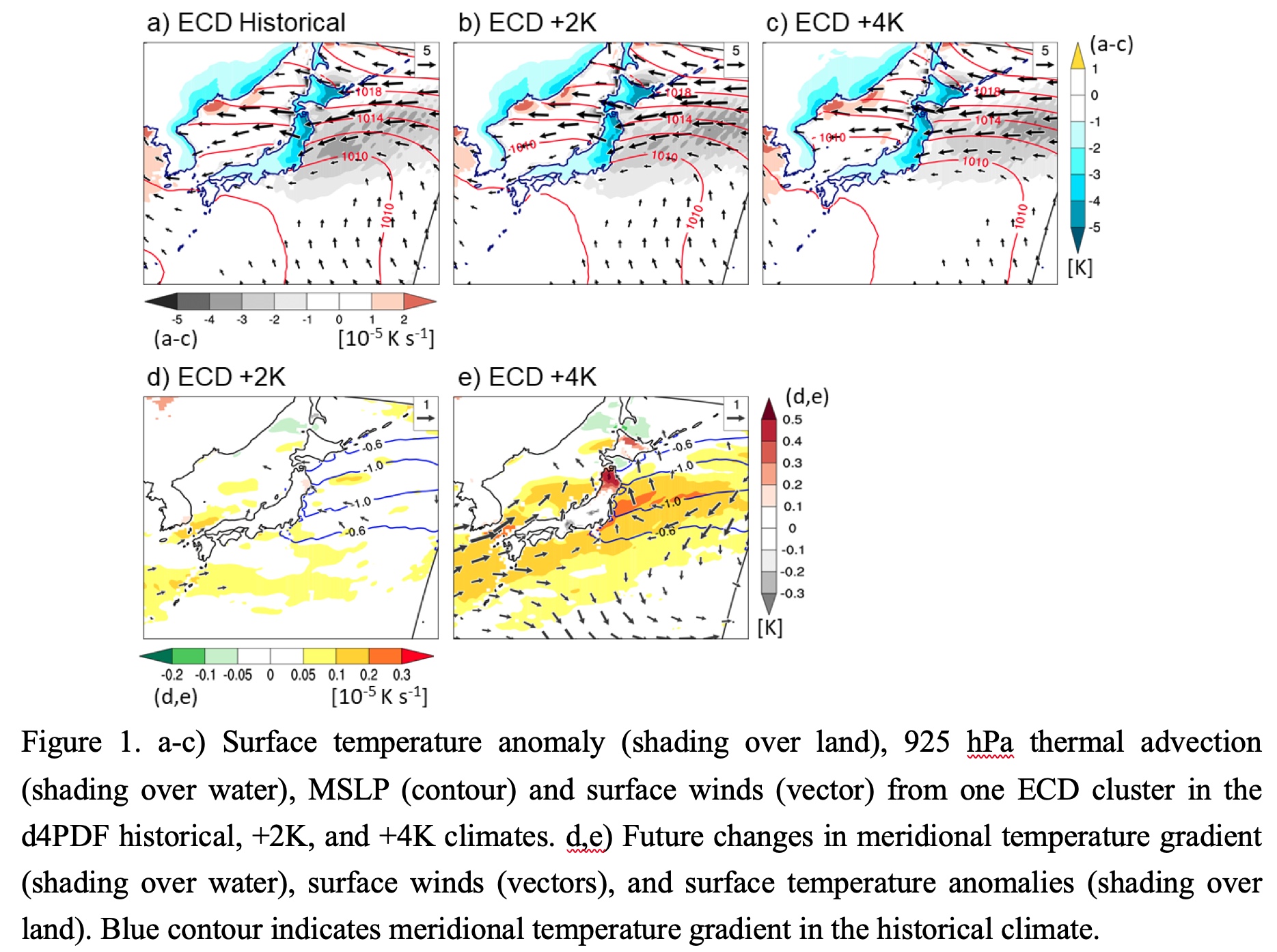Graphical Abstract
Kawazoe, S., M. Fujita, S. Sugimoto, Y. Okada, and S. Watanabe, 2020: Projected changes of extremely cool summer days over northeastern Japan simulated by 20 km-mesh large ensemble experiment. J. Meteor. Soc. Japan, 98, 1305–1319.
https://doi.org/10.2151/jmsj.2020-067
Early Online Release
Graphical Abstract
NEW
Plain Language Summary: Future changes to extreme cool days (ECDs) during the summer season (June – August) in northeast Japan is examined using the database for Policy Decision making for Future climate change (d4PDF) large ensemble experiments. We applied self-organizing maps (SOMs) to mean sea level pressure (MSLP) patterns, which were then classified into four clusters with high ECD occurrences. The response of the four clusters to a 2K and 4K warming scenarios was investigated, focusing on the role of low-level thermal advection.
Highlights:
- Four clusters producing ECDs were characterized by a presence of the Okhotsk Sea high, low-pressure system off eastern Japan, or a strong low-pressure center near the Bering Sea.
- Regardless of the circulation patterns, weaker cold air advection approaching northeast Japan is seen in the +2K climate and continues to weaken in +4K climate, due to positive changes in meridional temperature gradient near the area of strong cold air advection.
- While ECDs are projected to persist in future climates, they may not be as anomalously cool compared to what is experienced presently.







